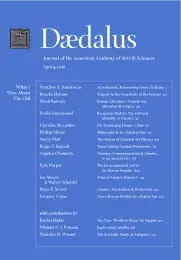The Environmental Fall of the Roman Empire
Global environmental history is currently being enriched by troves of new data, and new models of environmental variability and human impact. Earth scientists are rapidly expanding historians’ knowledge of the paleoclimate through the recovery and analysis of climate proxies such as ice cores, tree rings, stalagmites, and marine and lake sediments. Further, archaeologists and anthropologists are using novel techniques and methods to study the history of health and disease, as revealed through examination of bones and paleomolecular evidence. These possibilities open the way for historians to participate in a conversation about the long history of environmental change and human response. This essay considers how one of the most classic of all historical questions–the fall of the Roman Empire–can receive an answer enriched by new knowledge about the role of environmental change.
On the twenty-first day of April in AD 248, Rome celebrated her one thousandth birthday. For three days and three nights, the haze of burnt offerings filled the streets. An exotic menagerie befitting the seat of a tricontinental empire was presented to the people, and massacred: thirty-two elephants, ten elk, ten tigers, sixty lions, thirty leopards, six hippopotami, ten giraffes, the odd rhinoceros, and innumerable other wild beasts, not to mention one thousand pairs of gladiators. The ludi saeculares (“century games”) summoned forth a host of archaic memories, “skilfully adapted to inspire the superstitious mind with deep and solemn reverence,” in the words of Edward Gibbon.1 The celebration still carried shadowy associations with the underworld; the rituals encouraged the diversion of pestilence. Despite the deliberate primitivism of the rites, the ludi saeculares could be credited, like so much else, as a creative rediscovery of the imperial founder, Augustus. The ludi saeculares were in every sense an imperial affair, a stage-crafted display of the awesome power that Rome enjoyed, unbroken for centuries on end. Little did contemporaries know they were witnessing a sort of valediction: the last secular games of Rome. . . .
